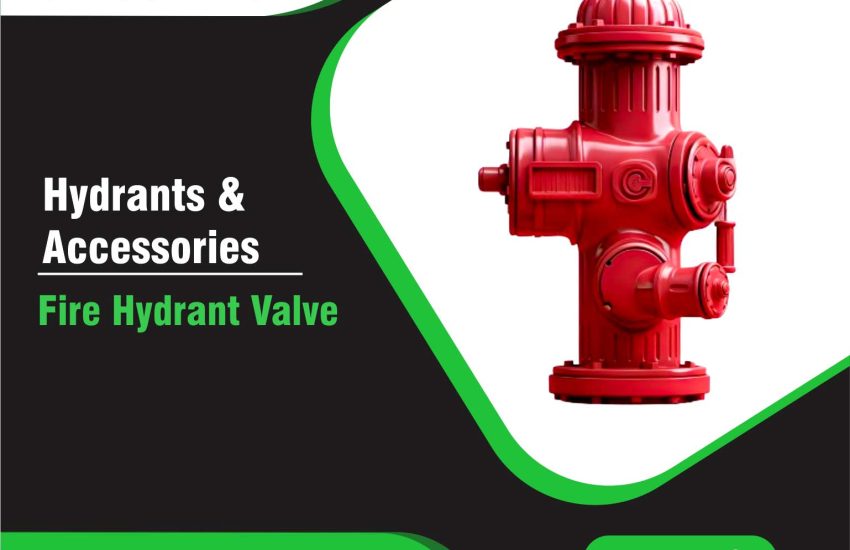Fire Hydrant Valve is an essential part of any fire protection system. It connects the fire hydrant to the water supply, enabling firefighters to access water quickly during a fire. In this article, we will discuss the specifications, features, and benefits of the fire hydrant valve, highlighting its importance in firefighting efficiency.
What is a Fire Hydrant Valve?
A fire hydrant valve controls the water flow from a fire hydrant into firefighting hoses or a building’s sprinkler system. It allows firefighters to regulate the water pressure and flow, ensuring they have an adequate water supply. With its user-friendly design, the valve enables easy and quick operation, which is crucial during a fire emergency.
Key Specifications of Fire Hydrant Valve
- Material and Durability
Fire hydrant valves are made from materials like brass, cast iron, stainless steel, or ductile iron. These materials resist corrosion and ensure the valve lasts long, even in harsh conditions. - Pressure Rating
The fire hydrant valve can handle high-pressure systems. Typically, the pressure rating ranges from 150 psi to 250 psi, though some valves are rated for even higher pressures to meet more demanding fire protection needs. - Size and Connection Type
Fire hydrant valves come in sizes ranging from 2.5 inches to 6 inches. They are compatible with various firefighting equipment due to their flanged or threaded connections, making it easy for firefighters to connect the hoses quickly during emergencies. - Flow Rate
The flow rate of fire hydrant valves typically ranges from 500 GPM to 1,000 GPM or more. This high flow rate ensures firefighters have sufficient water to suppress a fire effectively, which is crucial during emergencies. - Operating Mechanism
Fire hydrant valves come with either a manual or automatic mechanism. Manual valves require firefighters to open or close them by hand, whereas automatic valves open or close based on the water supply system’s needs, allowing for faster operation in high-pressure situations. - Compliance with Standards
Fire hydrant valves meet various safety standards, such as NFPA 24 and UL certification. These certifications guarantee the valve’s reliability, ensuring the system’s effectiveness in a fire emergency. - Environmental Rating
Many fire hydrant valves have an IP66 or higher ingress protection rating. This rating ensures that the valve can withstand dust and water exposure, which makes it suitable for use in various environmental conditions, from freezing temperatures to extreme heat.
Features of Fire Hydrant Valve
- Durable Construction: Fire hydrant valves are made of high-quality, corrosion-resistant materials, ensuring they can withstand harsh environments.
- High Flow Capacity: These valves are designed to handle high water flow, enabling firefighters to tackle fires quickly and effectively.
- Easy Operation: Fire hydrant valves are simple to operate, whether manually or automatically, enabling fast action when needed.
- Weatherproof Design: With a weatherproof design, fire hydrant valves maintain reliable performance in all weather conditions, ensuring they are ready for emergencies.
Benefits of Using Fire Hydrant Valve
- Improved Firefighting Efficiency
The fire hydrant valve ensures firefighters can quickly access a water supply, improving their ability to suppress fires effectively and efficiently. - Enhanced Fire Safety
By providing a dependable water source, the fire hydrant valve enhances overall fire safety. It helps minimize damage to property and ensures the protection of lives during a fire. - Compliance with Fire Safety Regulations
Installing a fire hydrant ensures compliance with NFPA 24 and local fire codes. This guarantees the building meets legal requirements and is prepared for any fire emergency. - Cost-Effective Solution
Fire hydrant valves are affordable yet provide significant value in fire protection systems. Their low cost combined with their crucial function makes them a cost-effective investment for both residential and commercial properties. - Versatile Applications
These valves can be used in a variety of settings, from commercial buildings and industrial sites to residential areas. They are designed to be compatible with multiple firefighting systems, offering flexibility across different applications. - Reliability and Durability
The fire hydrant valve is reliable, even under high pressure and extreme weather conditions. Its durability ensures it will perform when needed most, enhancing the overall effectiveness of the fire protection system.
Installation and Maintenance of Fire Hydrant Valve
Installing a fire hydrant valve requires proper knowledge and expertise. It should be connected correctly to the water supply system and placed in a location that is easy for firefighters to access. Installation must meet local fire safety standards to ensure that the system functions properly.
Regular maintenance ensures the fire hydrant remains in optimal condition. Inspections should check for leaks, corrosion, or any other issues that could impact performance. Additionally, test the flow and pressure regularly to ensure the system is functioning as expected. Make sure that any protective covers are intact and undamaged.
Conclusion
The fire hydrant valve is a critical component of any fire protection system. With its high flow capacity, durable construction, and reliable performance, the valve helps firefighters access water quickly and efficiently. It is essential for ensuring compliance with fire safety standards and improving firefighting effectiveness.


